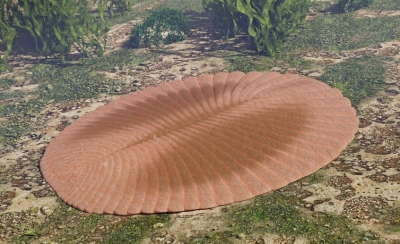
Dickinsonia is an extinct genus of basal animal that lived during the late Ediacaran period in what is now Australia, China, India, Russia and Ukraine. The individual Dickinsonia typically resembles a bilaterally symmetrical ribbed oval. Its affinities are presently unknown; its mode of growth is consistent with a stem-group bilaterian affinity, though some have suggested that it belongs to the fungi, or even an “extinct kingdom”. The discovery of cholesterol molecules in fossils of Dickinsonia lends support to the idea that Dickinsonia was an animal.
They are nearly bilaterally symmetric, segmented, round or oval in outline, slightly expanded to one end (i.e. egg-shaped outline). The rib-like segments are radially inclined towards the wide and narrow ends, and the width and length of the segments increases towards the wide end of the fossil. The segments are separated by a thin ridge or groove along the axis of symmetry into right and left halves.
Some spectacular fossils attributed to Dickinsonia appear to preserve internal anatomy, believed to represent a tract that both digested food and distributed it throughout the organism.
Picture Credit : Google




